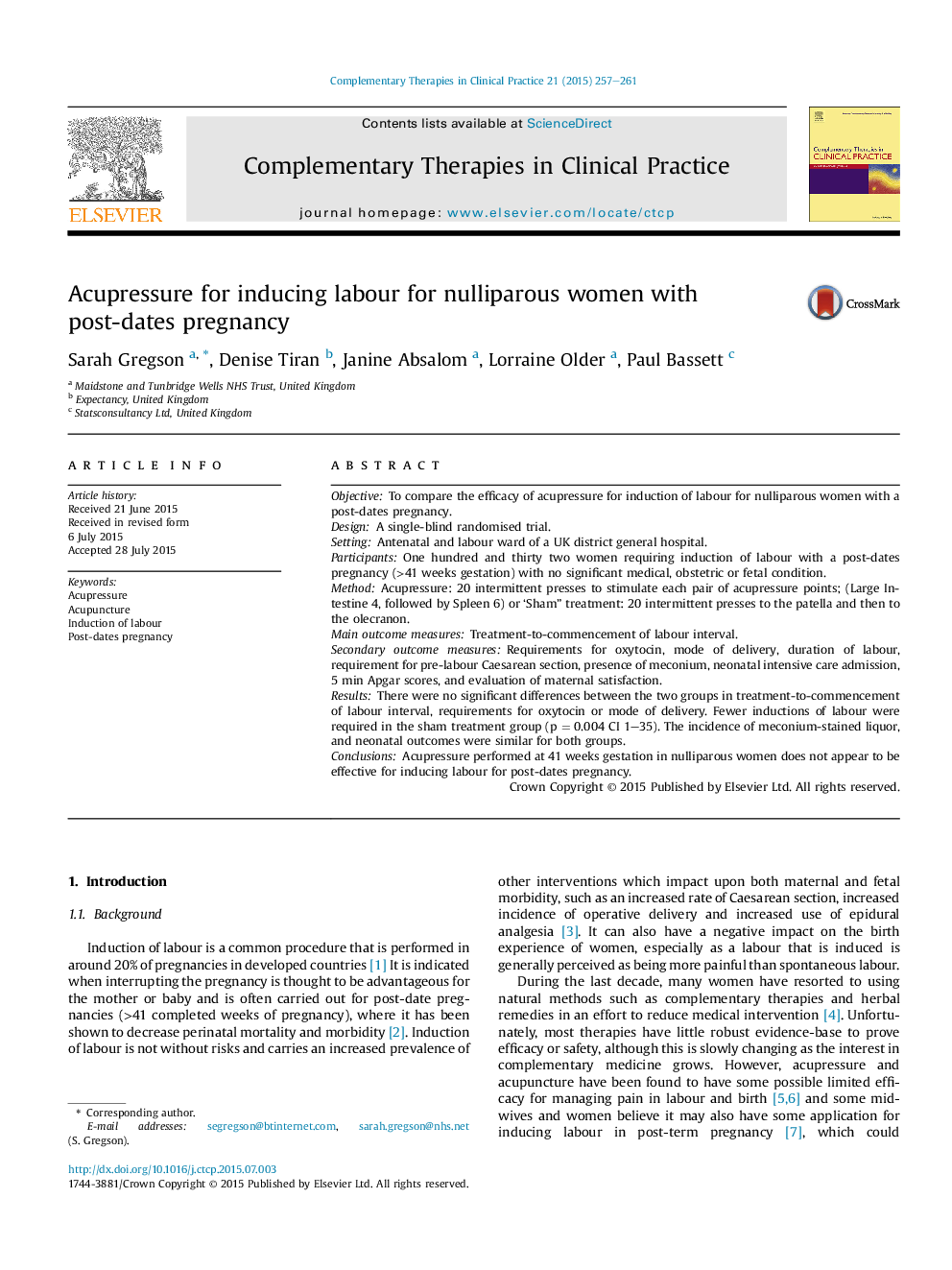| Article ID | Journal | Published Year | Pages | File Type |
|---|---|---|---|---|
| 2628284 | Complementary Therapies in Clinical Practice | 2015 | 5 Pages |
•Induction of labour is a common procedure performed in around 20% of pregnancies.•Many women use complementary therapies to reduce medical intervention.•Acupressure does not appear to be effective at inducing labour in nulliparous women.
ObjectiveTo compare the efficacy of acupressure for induction of labour for nulliparous women with a post-dates pregnancy.DesignA single-blind randomised trial.SettingAntenatal and labour ward of a UK district general hospital.ParticipantsOne hundred and thirty two women requiring induction of labour with a post-dates pregnancy (>41 weeks gestation) with no significant medical, obstetric or fetal condition.MethodAcupressure: 20 intermittent presses to stimulate each pair of acupressure points; (Large Intestine 4, followed by Spleen 6) or ‘Sham” treatment: 20 intermittent presses to the patella and then to the olecranon.Main outcome measuresTreatment-to-commencement of labour interval.Secondary outcome measuresRequirements for oxytocin, mode of delivery, duration of labour, requirement for pre-labour Caesarean section, presence of meconium, neonatal intensive care admission, 5 min Apgar scores, and evaluation of maternal satisfaction.ResultsThere were no significant differences between the two groups in treatment-to-commencement of labour interval, requirements for oxytocin or mode of delivery. Fewer inductions of labour were required in the sham treatment group (p = 0.004 CI 1–35). The incidence of meconium-stained liquor, and neonatal outcomes were similar for both groups.ConclusionsAcupressure performed at 41 weeks gestation in nulliparous women does not appear to be effective for inducing labour for post-dates pregnancy.
